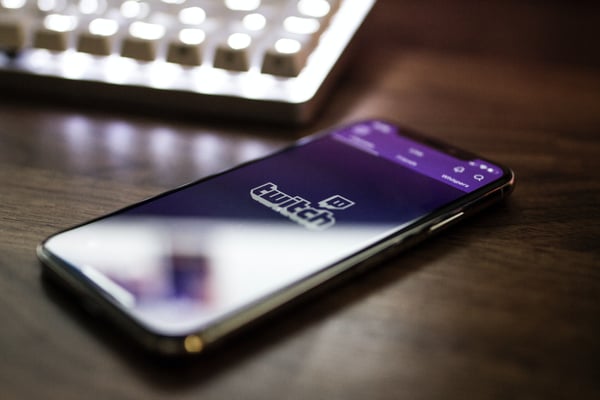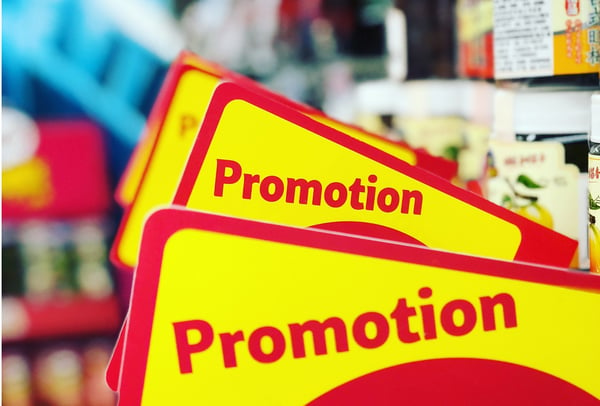Designing Your Gaming Brand Image to Grow, Engage and Retain Players
by Game Marketing Genie, on 11-Jun-2020 11:58:26
A great brand image is essential in today's competitive gaming environment. A solid brand identity will help you stand out and capture your players' attention, which is critical in an industry packed with new content daily.
Every good brand has something that people associate with them. Coca-Cola is associated with refreshment and relaxation, which comes to mind when people hear the name. In mobile gaming, Angry Birds and Fruit Ninja are long-standing titles wildly popular with players. These games are known for their unique and entertaining animations, making them gaming sensations. The popularity of these games provided their developers with opportunities to sell beyond the games, tap into the merchandise market, and even create movie deals. Similar successes await when you make a good brand image for your game.
But creating a solid brand image doesn't happen overnight. It's more than designing a logo, choosing brand colors, and hoping to gain popularity in the gaming community. There are some things to do to develop a reputable brand image, and here are a few strategies that'll help you get started.
Define your brand persona
Defining your brand persona is the first step in designing your brand image. You need to think of your brand as a person with a unique personality and describe everything about this person. Your brand persona reflects the image your customers have of you, which will determine how they interact with your products. If your persona appeals to them, they'll download and sign up to play; if it doesn't, they'll choose other titles.
An authentic persona will help you establish trust with your players and maintain their loyalty. It creates reliable and realistic representations that your key audience segments can reference. It allows for an intimate connection with your users, and this is what you need to get more people to download your game and recommend it to their friends.
There are vital questions to ask yourself to help you create your brand persona, and these include:
1. What would your persona look like if it was a person?
Imagine Red Bull walking into a room. He’s European, lean, and sporty. He is full of energy, rich, and somewhat worldly. Then Monster Energy comes along. He is in a black t-shirt, a black baseball cap, and black jeans. He’s tatted up and full of attitude.
Both of these are energy drinks, but their personalities are different. A look at their website will reveal that these descriptions are close to matching their brand personas, and you need to do the same for your brand.
What does your brand persona look like? Male or female? Young or old? What clothes do they wear? Do they have a name? What do they associate themselves with? Be as detailed as possible when developing the description to ensure you create a persona that resonates with your target audience.

2. What traits does your brand portray?
Brand personas can take several personality traits based on human behavior. Your persona could be a caregiver. Nurturing, kind, and showing empathy and responsible behavior. Or it could be competent, meaning it's influential and able to sway others to act.
Exciting is another common personality trait. This persona is spirited and eager to embark on adventurous activities. Rugged is another popular personality trait. Such personas are athletic, tough, and full of energy. Finally, there is the sophisticated persona that exudes elegance and style.
When creating your brand personality, list the traits you want to portray your brand as and map out the personality from that list. This will help you create a real connection with your users, resulting in greater brand awareness.
3. How would your persona speak to people?
Another vital consideration is how your brand persona will communicate with your customers. Your product's nature and target audience will determine the communication style. Since users attribute human characteristics to their favorite brands, the language and tone of voice used when sharing brand communication should reflect those characteristics.
If you target young men with your game, you should speak like them. Use the exact words your target audience uses when communicating to make it easy for them to identify with your brand and the game. Customers want their thoughts reflected, and this is what you achieve when you speak in their language.

4. What colors and style match your persona?
The color palette you choose for your brand image is hugely important. Colors can be used to differentiate your brand from the competition, so you need to be careful when making the selections. A good color palette is flexible, with one primary color and 2-3 complementary colors.
Specific colors are also known to elicit emotions, and this will also influence your choice of color. The color red, for instance, conveys adrenaline and excitement in the gaming industry. Other bright colors can be combined with images to give your brand a strong identity.
Consider Twitch, which moved away from standard colors like red that many major brands use for a distinctive purple shade that is easily recognizable.
5. How does your persona engage with others?
You must visualize how your brand persona will interact with your customers. Will it high-five your customers or fist-bump them? Or it could give them a warm hug and have conversations that connect personally.
How this interaction plays out will help determine the style of communication and language used to promote your game.
The answers to these questions will be critical to setting your brand’s foundation and interacting with your audience.

Consistency is key
Well-known gaming brands are recognized because they're consistent in the things they do. Their colors, images, and style are aligned with the core of their game marketing model. Creating a style guide to retain consistency and make it easy for players to recognize your brand is essential.
Visual elements enhance your brand identity, and it starts with the creation of a brand logo. The logo should appear on everything related to your business, including your website, social media channels, and physical documents like business cards. The logo becomes your calling card and the visual representation of your brand promise.
When designing your logo, consider the latest trends to see what's popular. Check out what your competitors are doing design-wise but don't copy them.
As we mentioned earlier, Twitch decided to use an all-purple design for their brand when other brands were gravitating towards similar visual elements (the red color of YouTube and Netflix). This allowed them to stay different, and the company achieved massive success in the coming years, eventually getting sold to Amazon in 2014 for a cool $1 billion.
Hire a game marketing agency to design something unique that will reinforce the visual identity for your game and make it stand out in the crowded gaming sphere.

Make your promotional activities count
After laying down the foundation for your brand identity, you can build up your promotional activities to create a loyal customer base and generate sales for your game. The main components that will help you promote your game on a wider scale include:
PR
Public relations disseminate your company news and key brand messages in news outlets, gaming publications, and online blogs. It positions your company as a thought leader and an expert source of trends and breaking news. These measures raise your brand awareness and improve your brand image.
SEO
Search engine optimization is a marketing strategy that will improve the ranking of your website on search engines like Google. To make an impact on your target audience, you need to rank well for specific keywords and phrases. This will increase the traffic getting to your website and other online assets.
Social media
Social media is an excellent platform for sharing valuable information with your audience and interacting with influencers. An active presence on the proper social channels will increase traffic to your website and boost your reputation with new and existing customers.
Content creation
Content is the fuel that powers digital marketing and integrated PR activities. To elevate the profile of your brand, you’ll need a steady supply of white papers, blog posts, and contributed articles to target your audience segments.
We have shared more tips on the best digital marketing strategies to promote your brand in our blog, The Game Developer's Guide to Digital Game Marketing.

A brand image is a big thing; it can make or break your brand. Making a name for yourself in the competitive gaming industry is only possible with the right game marketing strategies. Your download stats will remain low, and you will struggle to generate revenue from product sales. The team at Game Marketing Genie are experts at creating brand bibles to help you set yourself up for success and stay on track into the future.
Need more info? Let's chat today about how we can make the most of your marketing opportunities.


